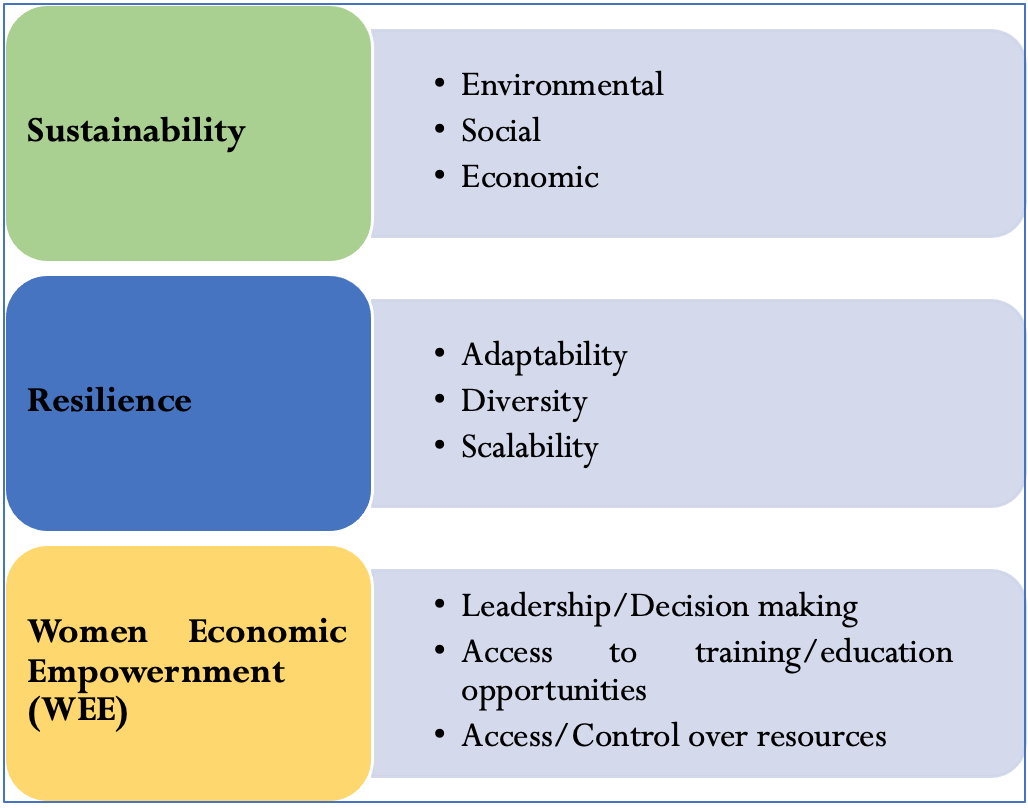Issue 1
By Dorcas Kalele and Joel Onyango
Real-world impact can be realized through action-oriented research approaches as well as through knowledge generated to impact societal technical action. Creation of knowledge for sustainability and achieving real-world impact can be mediated using different methods and tools, especially based on decision theory, to support decision-making processes.
Evidence based decision making, that shape policy and technological discourses can be classified as mono-criterial (when only one criterion or goal is considered to evaluate its performance) or multicriterial (which considers the interaction between two or more goals or criteria that can be in conflict or synergy). A Multi-criteria Mapping Approach (MCM) is an interactive, multicriterial appraisal method designed to map diverse perspectives in the anticipatory appraisal of complex policy issues, especially around emerging technologies. The MCM approach is a ‘non-linear’ process which allows for an iterative, interactive and cyclical process. It is ‘iterative’ because participants can freely move in any direction between each step, ‘interactive’ because it is governed by the participant’s own interaction with the process and ‘cyclical’ because the process can be freely repeated.
The Blue Empowerment (BE) project aims at proposing socio-technical, policy and governance configurations that can support in optimizing gender-transformative practices that are resilient to shocks (such as Covid-19), enhance inclusive empowerment, and ensure sustainability. This can be achieved by drawing relationships between stakeholders’ interests and their processes. The MCM methodology was used to systemically appraise and explore socio-technical, policy and governance options that would be best suited in promoting effective implementation and uptake of Integrated Multitrophic Aquaculture (IMTA) in Kwale and Kilifi Counties in Kenya. A core criterion[1] was developed to determine what it means for a technology, policy and governance option to be technically and socially smart. The identified criteria included: sustainability, resilience and women economic empowerment and the parameters under each criterion were as presented in figure 2. The analysis used MCM web application tool to facilitate a structured interaction with stakeholders for the systematic appraisal of policy, technology and governance options. This followed a step-by-step process as shown in figure 1 below.

Figure 1: MCM Assessment Process

Figure 2: Defined Criteria for Technology, Policy & Governance Options
The MCM approach supported in guiding a systematic assessment of stakeholders’ opinions, interests, and positions of influence while integrating gender and social inclusion gaps in the process. A diverse group of actors in the seaweed-fish value chains ranging from researchers, policy makers, scholars as well as the community were involved in the assessment. The participants were first introduced to the MCM tool, the different options and criteria which were open for their judgement and determination of their fit for use in the assessment. After consensus, the participants were then allowed to appraise the different technologies, governance, and policy options (See figure 3), intended to stimulate inclusive innovations in the BE project. The participants provided their judgement based on their understanding and relevant information guided by the defined criteria. The overarching question in the assessment, by reference to a range of defined options and stakeholder perspectives, was, ‘which technology, policy and governance options are expected to perform more or less favorably, under which conditions ‘criteria’ and why’? The participants were encouraged to think how different options may perform considering complexities, uncertainties and ambiguities while allowing their views to move away from any notionally single best answer.

Figure 3: Defined Technology, Policy, and Governance Options
The MCM uses two forms of data visualization and analysis referred to ‘pairwise inclination’ and ‘merit order’. Under the pairwise inclination chart the participants assigned ‘optimistic’ and ‘pessimistic’ scores under each criterion for each option. The differences between the two (i.e. the length of the bar) from the final ranks charts produced by each MCM interviewee was then used to compare their appraisal of each possible pairing of the core options that they had appraised. The performance of all options is beset by uncertainty, albeit to differing degrees, and it can often be seen that better ‘performing options’ are outperformed under their pessimistic scores by poorer performing options under their optimistic scores. At every step of assessment, participants were asked to justify their scoring in relation to their own understanding and capture their qualitative reasons to depict their own understanding as well as assign simple numerical weights to criteria to produce a picture of overall option rankings.
The assessment enabled gathering of a rich array of quantitative and qualitative data. Importantly, MCM is a cognitively demanding approach, consequently only the fully completed MCM engagements (both quantitative and qualitative data) from the interviewees were included in analysis. At the analysis stage, all the quantitative and quantitative data contained in the individual MCM engagements was loaded into the analysis section of the MCM application and synchronization of the completed MCM engagements was done. Thereafter participants’ viewpoints were grouped into ‘perspectives’ referred to as ‘grouping of views’ segregated based on the stakeholders’ categorization i.e. community and other stakeholders (policy and governance). Subsequently, creating issues (grouping of criteria), as well as clusters (grouping of options based on commonality) was done. An overview of the visual graphs of scores and weights for the different technology. policy, and governance options based on the stakeholders’ perspectives were shared with the participants who were then allowed to interact with the pictorials to meaningfully reflect on them.
Key Findings
The following were key findings garnered from the appraisal of the options using the MCM approach:
- The hybrid form of governance was most preferred option which suggests the need for creating and strengthening synergies among the state and non-state actors in various research and development initiatives
- IMTA and seaweed farming were the most preferred technology options, which shows that the fishers’ community are ready to engage in new practices in the utilization of ocean resources
- Engendering blue economy policies emerged as the most preferred policy option, although further discussions revealed that the community’s interests were inclined more to integration of new practices into policies.
- The community’s engagement in seaweed farming had brought transformation in the community especially among various categories of women but still more effort was needed to break social-cultural barriers to allow women harness benefits from the utilization of ocean resources
Conclusions
The MCM approach proved to be a relevant tool for evaluating stakeholders’ perspectives of technology, policy and governance options for supporting implementation of IMTA. The participatory nature of the process created an opportunity for the different stakeholders to engage in decision-making, visualization of their inclination on the preferred options while expressing their uncertainties about effectiveness of the preferred options. In some instances, variations in responses were generated from the various categories of respondents which were proponents based on own knowledge and experiences. The rich array of data and information garnered from the MCM approach will inform further stakeholder engagements especially in defining and addressing gaps in technology, policies and governance mechanisms which is an essential component of project implementation.
References
Bellamy, R. et al. (2013) ‘“Opening up” geoengineering appraisal: Multi-Criteria Mapping of options for tackling climate change’, Global Environmental Change. Elsevier Ltd, 23(5), pp. 926–937. doi: 10.1016/j.gloenvcha.2013.07.011.
Coburn, J. and Stirling, A. (2016) Multicriteria Mapping Manual, Version 2.0, SWPS 2016-21. Brighton: SPRU - Science Policy Research Unit, University of Sussex.
Coburn, J., Stirling, A. and Bone, F. (2019) Multicriteria Mapping Manual - Version 3.0. Brighton, UK: SPRU - Science Policy Research Unit, University of Sussex. http://users.sussex.ac.uk/~prfh0/MCM_Manual.pdf
[1] "criteria" is defined as the numerous factors that participants should consider when comparing and choosing between or comparing, the pros and cons of different options.

